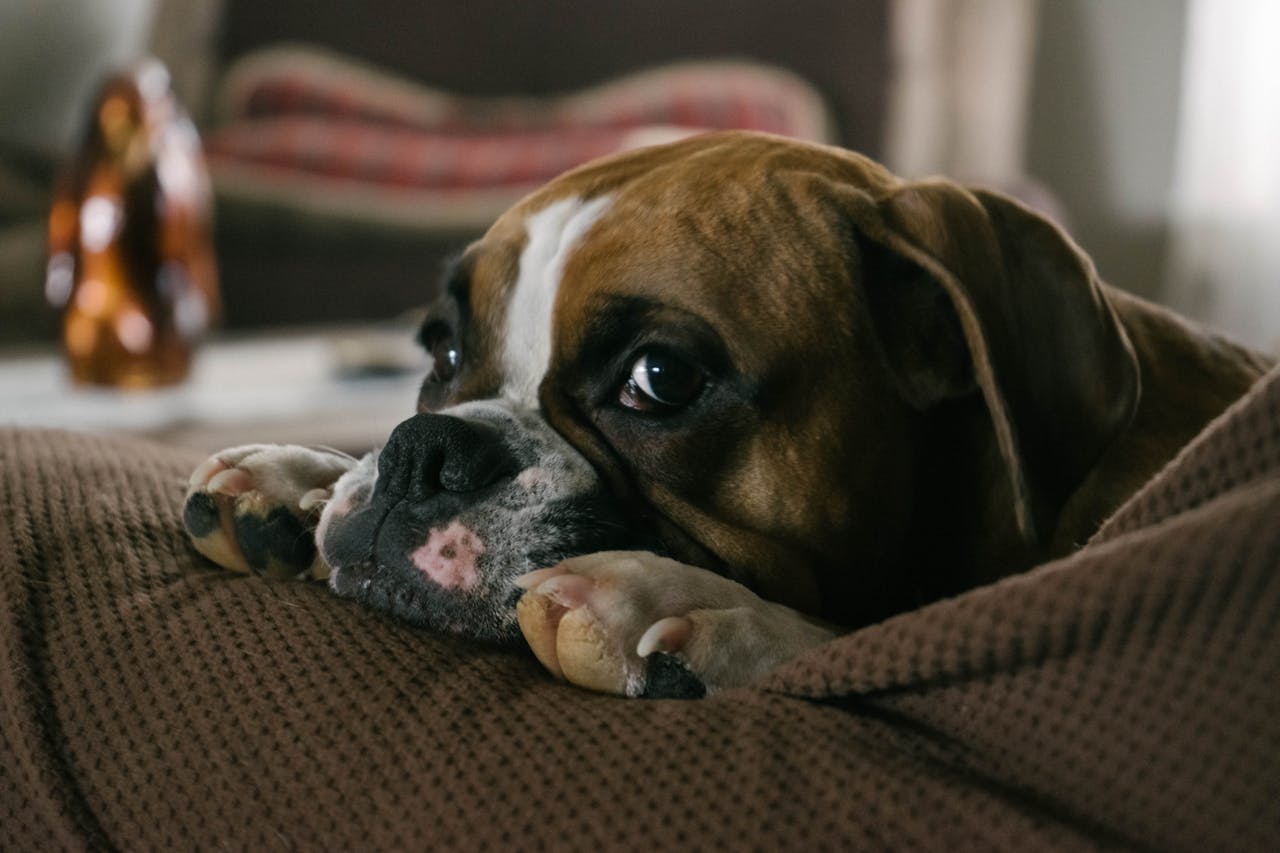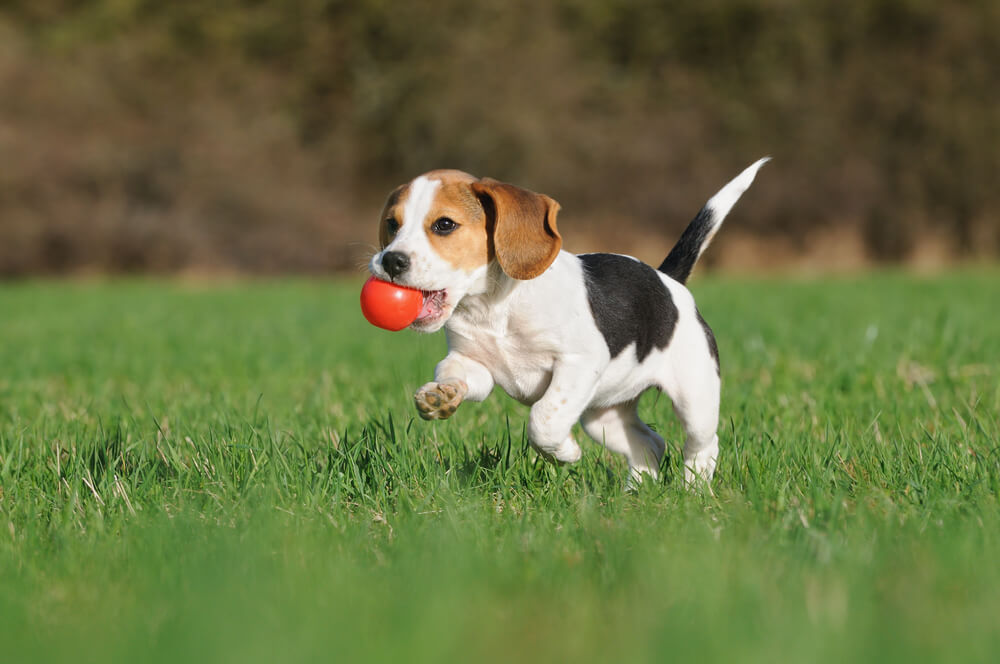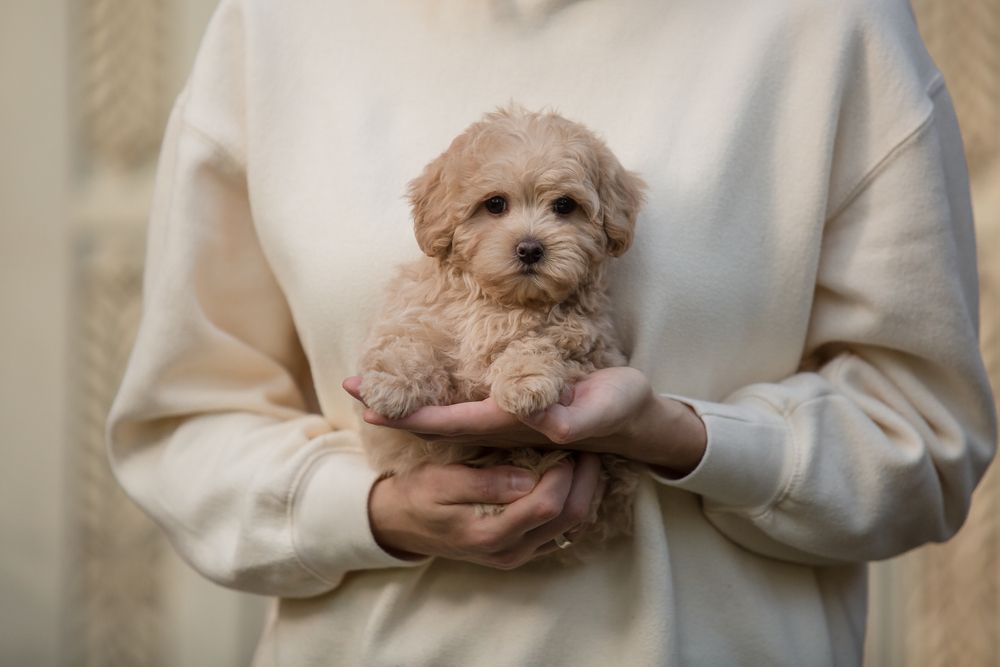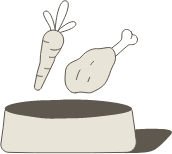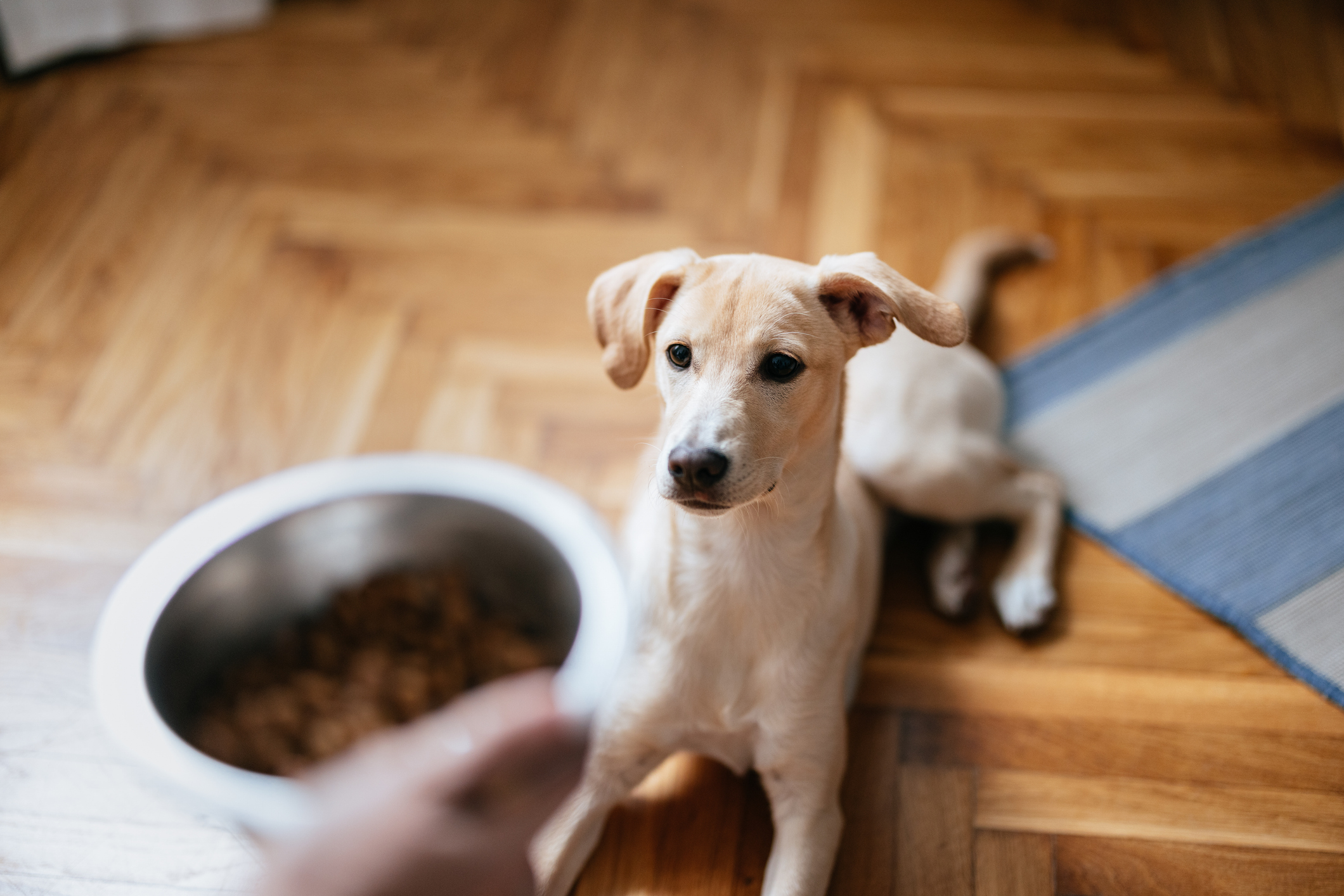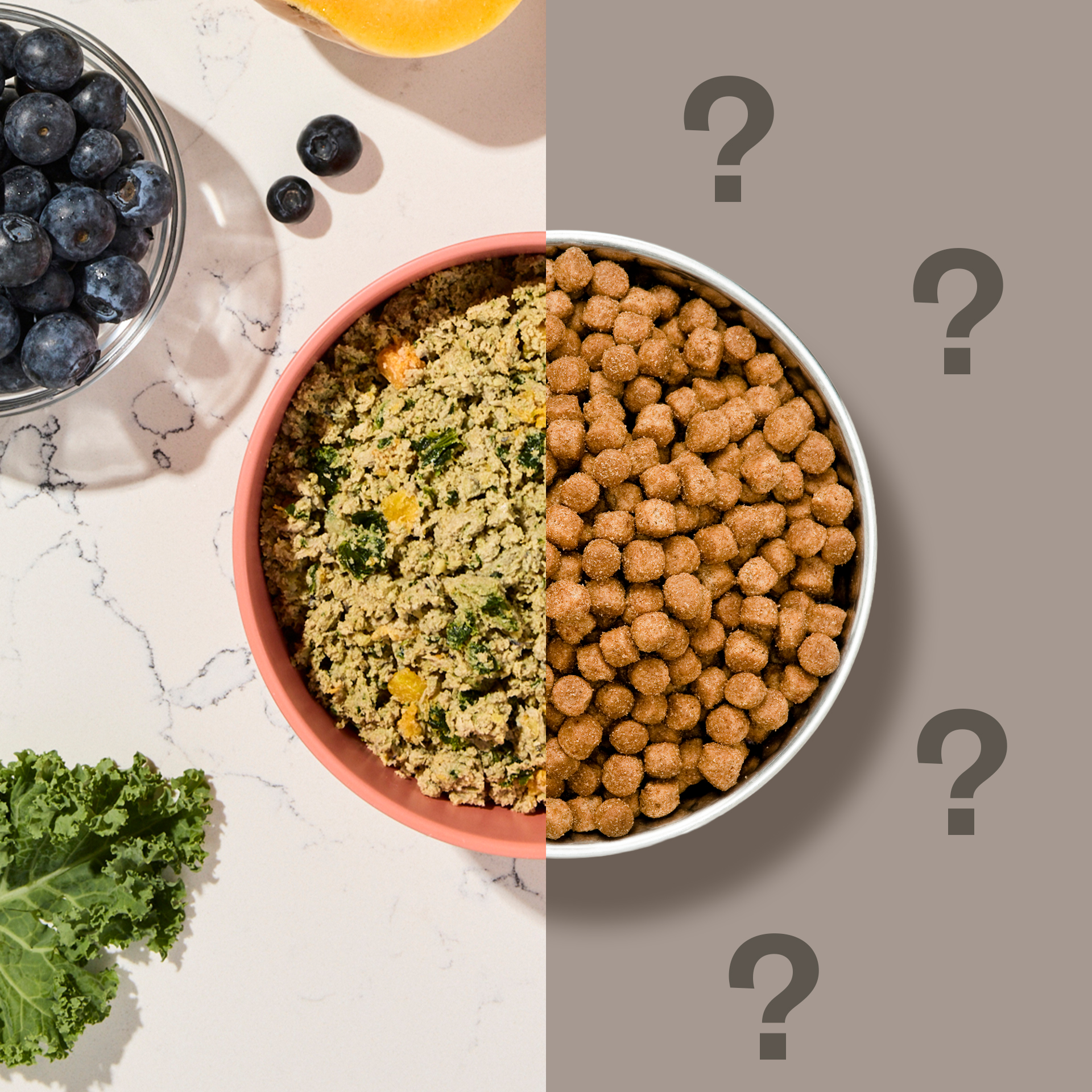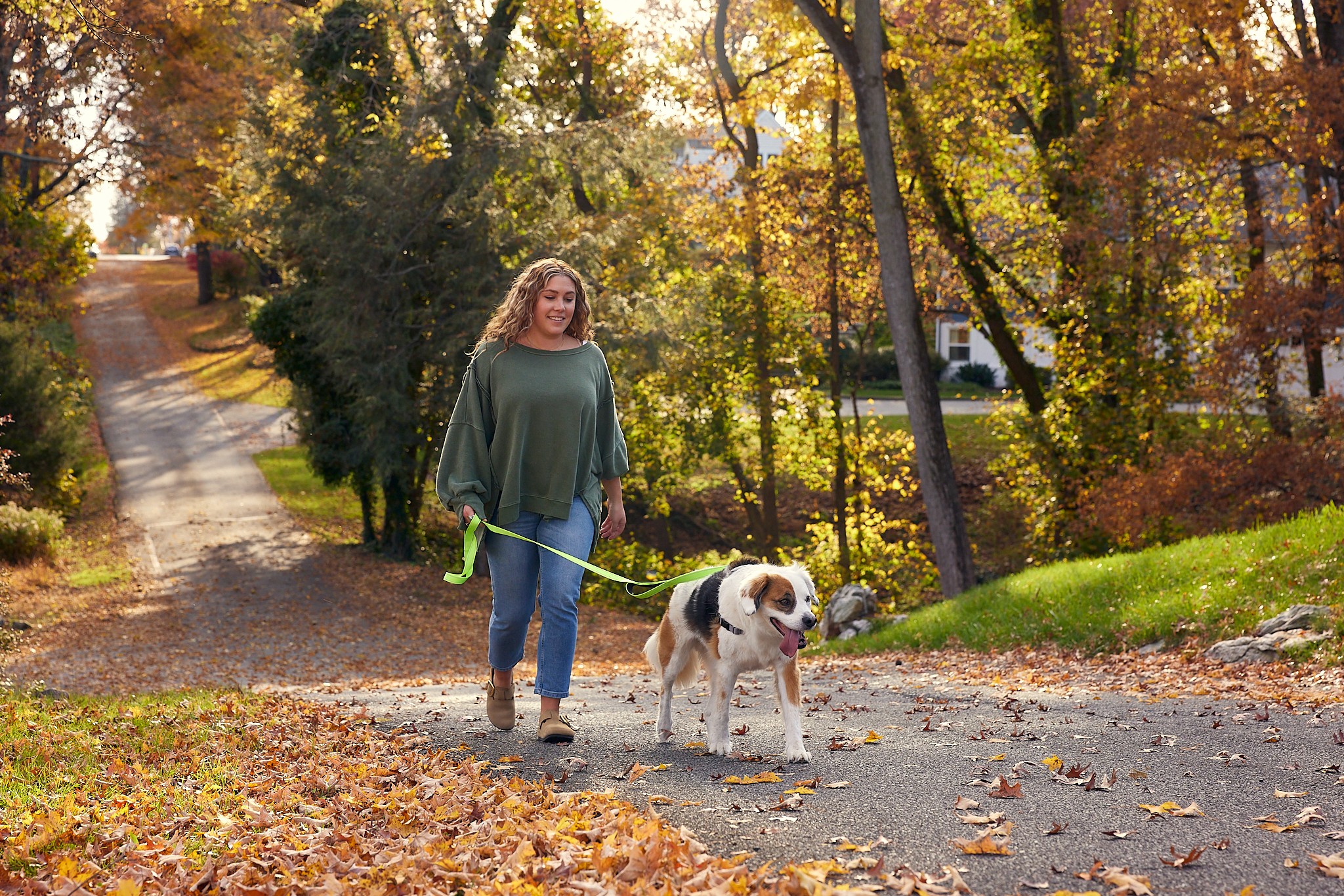Hey Ollie blog readers! We’re offering you an exclusive 60% OFF your starter box! Try now!
If your dog is constantly chewing or licking their paws, it could be a sign of an underlying issue. While occasional paw licking is normal—such as after a walk or grooming session—persistent chewing can indicate allergies, infections, stress, or skin irritation. Left untreated, excessive licking can lead to inflammation, redness, hair loss, and even secondary infections.
There are several reasons why dogs chew their paws, ranging from environmental and food allergies to parasites, dry skin, or anxiety-related behaviors. Identifying the root cause is essential for stopping the behavior and preventing long-term discomfort.
A dog’s diet plays a significant role in skin and coat health, and poor-quality food can contribute to allergic reactions, dryness, and itchiness. Feeding a high-quality, fresh dog food diet that includes nutrient-dense ingredients can help reduce inflammation, strengthen the skin barrier, and support overall paw health.
This guide will explore why dogs chew their paws, the most common causes, and effective treatments, as well as how nutrition and preventative care can help keep your dog’s paws healthy and irritation-free.
Key Takeaways
- Dogs chew or lick their paws due to allergies, infections, injuries, or stress. Identifying the root cause is essential for effective treatment.
- Persistent paw chewing can lead to redness, inflammation, hair loss, and secondary infections. Early intervention helps prevent long-term skin damage.
- A high-quality human-grade dog food diet such as Ollie can support skin and coat health, reducing allergy-related itching and irritation. Many commercial dog foods contain fillers or allergens that may contribute to excessive paw licking.
Why Do Dogs Chew Their Paws? Common Causes
Occasional paw licking is normal, but excessive or persistent chewing is usually a sign of an underlying issue. Identifying the root cause can help prevent further discomfort and skin damage. Below are the most common reasons why dogs chew or lick their paws.
1. Allergies (Food & Environmental)
Allergies are one of the most common causes of paw chewing in dogs. Allergic reactions can be triggered by certain food ingredients, environmental allergens like pollen or dust mites, or flea bites. When a dog has allergies, their immune system overreacts, causing itchiness, redness, and inflammation, especially on the paws.
Food Allergies
Common culprits include chicken, beef, dairy, wheat, and soy. Dogs with food sensitivities often show signs of itchy skin, chronic ear infections, and digestive issues in addition to paw licking. Switching to a fresh, high-quality diet with limited ingredients can help reduce food-related allergic reactions.
Environmental Allergies
Pollen, mold, and household chemicals can irritate the skin, leading to excessive licking. Wiping your dog’s paws after walks can help remove allergens before they cause irritation.
2. Skin Infections & Yeast Overgrowth
Bacterial or fungal infections can cause intense itching, swelling, and a foul odor around the paws. Yeast infections, in particular, thrive in warm, moist environments, making the spaces between the toes a perfect breeding ground. If your dog’s paws appear red, inflamed, or have a strong smell, an infection may be the cause.
3. Injuries or Irritations
Dogs may chew their paws in response to cuts, burns, splinters, or insect bites. Walking on hot pavement, rough terrain, or salted sidewalks can also cause irritation and dryness, leading to excessive licking. Checking your dog’s paws regularly for wounds, foreign objects, or cracked paw pads can help prevent irritation from worsening.
4. Parasites (Fleas, Mites, and Ticks)
External parasites like fleas, mites, and ticks can cause severe itching, leading dogs to chew their paws for relief. Sarcoptic mange (caused by mites) can result in extreme discomfort and hair loss. Regular flea and tick prevention is crucial in keeping skin irritation under control.
5. Anxiety & Stress-Related Licking
Some dogs chew their paws due to stress, boredom, or anxiety. This behavior, known as compulsive licking, is similar to nail-biting in humans and often occurs in dogs experiencing separation anxiety or lack of mental stimulation. Providing interactive toys, regular exercise, and calming routines can help reduce stress-related paw chewing.
6. Dry Skin & Paw Pad Issues
Cold weather, excessive bathing, or exposure to chemicals (like de-icing salts) can cause dry, cracked paw pads, leading to licking and discomfort. Applying a paw balm or coconut oil can help soothe irritation and keep paw pads moisturized.
7. Underlying Medical Conditions
In some cases, excessive paw chewing may be linked to hormonal imbalances, autoimmune diseases, or arthritis. If your dog’s paw licking is accompanied by hair thinning, weight changes, or general lethargy, a vet visit is recommended to rule out underlying medical conditions.
Finding the Root Cause
Since paw chewing can stem from multiple factors, it’s important to observe your dog’s symptoms and identify potential triggers. Addressing allergies, infections, stress, or dietary deficiencies can help reduce excessive licking and keep paws healthy.
Symptoms to Watch For
If your dog is frequently chewing or licking their paws, it’s important to monitor for signs of irritation or infection. While mild licking may not be a concern, persistent or aggressive chewing can lead to skin damage, inflammation, and secondary infections.
Common Symptoms of Excessive Paw Chewing
- Red, swollen, or inflamed paws – Indicates irritation from allergies, infections, or environmental factors.
- Excessive licking, biting, or gnawing – Suggests persistent discomfort that may require treatment.
- Hair loss or bald spots between the toes – Often caused by chronic licking or an underlying skin condition.
- Cracked, dry, or bleeding paw pads – Can result from dry skin, harsh surfaces, or excessive moisture.
- Foul odor or discharge – May indicate a bacterial or yeast infection.
- Limping or favoring one paw – Could signal an injury, embedded object, or joint pain.
When to See a Vet
While occasional licking is normal, you should consult a vet if:
- Paw chewing persists for more than a few days without improvement.
- You notice open wounds, swelling, pus, or a strong odor, which could indicate infection.
- Your dog is limping or appears to be in pain.
- The licking is compulsive and seems to be caused by anxiety or stress.
How Early Detection Helps
Catching and treating the underlying cause of paw chewing early can prevent long-term skin damage and discomfort. Addressing allergies, infections, and diet-related sensitivities can reduce inflammation and promote healthier skin.
Dog Chewing Paws Treatment Options
Effectively treating paw chewing requires identifying the underlying cause and addressing it with the right combination of home care, dietary changes, and veterinary treatment when necessary. Below are some of the best ways to help your dog find relief.
Identifying & Addressing the Root Cause
Since paw chewing can result from allergies, infections, or stress, pinpointing the specific trigger is crucial.
- Food Allergies: If your dog has chronic itching or digestive issues, switching to a fresh, high-quality diet with limited ingredients may help. Many commercial dog foods contain common allergens like chicken, beef, wheat, or soy, which can contribute to skin irritation. A diet rich in essential fatty acids, vitamins, and high-quality proteins supports skin health and reduces inflammation.
- Environmental Allergies: Wiping your dog’s paws after walks, using hypoallergenic shampoos, and limiting exposure to grass or pollen can help reduce irritation.
- Parasite Prevention: Regular flea and tick prevention helps prevent external parasites that can cause excessive itching.
Home Remedies for Mild Paw Chewing
For mild cases, at-home treatments can provide relief and help prevent further irritation.
- Paw Soaks: A warm water and Epsom salt soak can help reduce inflammation, while a diluted apple cider vinegar rinse can fight yeast and bacteria.
- Moisturizing Paw Balms: Coconut oil or paw balms help soothe dry, cracked pads and provide a protective barrier.
- Anti-Itch Sprays: Natural sprays containing aloe vera, chamomile, or oatmeal can help relieve minor itching.
When to See a Vet
If home treatments don’t improve your dog’s condition or if symptoms worsen, a vet visit is necessary. Your veterinarian may recommend:
- Prescription Medications: Antihistamines, anti-inflammatory drugs, or medicated creams may be prescribed for allergies or infections.
- Antibiotics or Antifungal Treatments: If a bacterial or yeast infection is present, targeted treatments will be needed.
- Allergy Testing: If food or environmental allergies are suspected, an elimination diet or allergy test may be recommended.
How to Prevent Excessive Paw Chewing
Preventing paw chewing requires a proactive approach to skin health, environmental management, and overall well-being. By addressing potential triggers and supporting your dog’s immune system, you can help reduce irritation and discomfort before it starts.
1. Feed a High-Quality, Nutrient-Rich Diet
A dog’s diet plays a critical role in skin and coat health, and many cases of chronic paw chewing stem from food sensitivities or nutrient deficiencies. Low-quality dog food often contains fillers, artificial additives, and common allergens that can contribute to inflammation and itchy skin.
A fresh, balanced diet with high-quality protein, Omega-3 fatty acids, and essential vitamins supports skin hydration and helps reduce allergy-related irritation. Dogs prone to food sensitivities may benefit from limited-ingredient diets that eliminate common triggers like chicken, beef, wheat, or soy.
2. Keep Paws Clean & Moisturized
Regular paw care helps prevent dirt buildup, dryness, and infections that could lead to irritation.
- Wipe paws after walks to remove allergens, road salt, or chemicals.
- Use paw balms or coconut oil to prevent cracked pads and dry skin.
- Bathe your dog with a gentle, hypoallergenic shampoo to reduce irritation.
3. Provide Mental & Physical Stimulation
Dogs that chew their paws due to boredom, stress, or anxiety may need more mental and physical engagement.
- Increase daily exercise through walks, playtime, or interactive games.
- Offer puzzle toys, chew toys, or frozen treats to distract from licking.
- If stress-related licking is an issue, calming supplements or behavioral training may help.
4. Use Paw Protection in Extreme Conditions
Weather and environmental factors can cause irritation and dryness, leading to paw chewing.
- In cold weather, dog booties or paw balms protect against ice, snow, and road salt.
- In hot weather, avoid walking on hot pavement, which can burn paw pads.
5. Maintain Regular Vet Checkups
If your dog frequently chews their paws, regular vet visits can help identify underlying health conditions, such as allergies, infections, or immune disorders. Early detection ensures more effective treatment and long-term relief.
Final Thoughts On Dogs Chewing Their Paws
While occasional paw licking is normal, persistent chewing or biting is often a sign of an underlying issue. Allergies, infections, injuries, and stress are some of the most common causes, and addressing these triggers is key to stopping the behavior and preventing long-term skin damage.
Treating paw chewing requires a combination of home care, dietary adjustments, and, in some cases, veterinary treatment. Keeping paws clean and moisturized, managing environmental allergens, and ensuring your dog gets enough mental stimulation can all help reduce excessive licking.
Since nutrition plays a major role in skin health, feeding a high-quality, fresh diet such as Ollie that provides essential nutrients and eliminates common allergens can help dogs with food sensitivities, dry skin, and inflammation. By making proactive changes to your dog’s diet and care routine, you can help them maintain healthy, itch-free paws for the long term.
Frequently Asked Questions
1. Why does my dog chew only one paw?
If your dog is chewing only one paw, it could be due to a localized issue, such as an injury, splinter, insect bite, or irritation from a chemical or allergen. Inspect the paw for cuts, redness, swelling, or foreign objects. If the licking persists, a vet visit may be necessary to rule out infections or joint pain.
2. Can allergies cause my dog to lick their paws?
Yes, both food and environmental allergies can cause excessive paw licking. Common triggers include pollen, dust mites, mold, grass, and certain food ingredients like chicken, beef, wheat, or soy. If allergies are suspected, switching to a fresh, limited-ingredient diet and reducing exposure to allergens can help.
3. Is it normal for dogs to lick their paws after a walk?
Mild licking after a walk is normal and often a way for dogs to clean their paws. However, if licking becomes excessive, it could be due to irritants like road salt, pollen, pesticides, or rough terrain. Wiping your dog’s paws after walks can help remove potential allergens and reduce irritation.
4. What can I put on my dog’s paws to stop licking?
For mild irritation, applying coconut oil, paw balms, or an anti-itch spray can help soothe the skin. If licking is due to an infection or allergy, it’s important to address the root cause rather than just masking the symptoms. Using an Elizabethan collar (E-collar) or dog socks can temporarily prevent licking while the paws heal.
5. Can diet changes help reduce paw chewing?
Yes, a fresh, nutrient-rich diet can help support skin and coat health, reducing itchiness and inflammation caused by food allergies. Many commercial dog foods contain fillers, artificial additives, and common allergens, which can contribute to chronic itching. Switching to a high-quality, balanced diet with Omega-3 fatty acids and essential nutrients can improve skin hydration and reduce allergic reactions.
Tagged As:
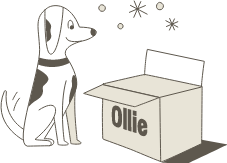
The nutrition your dog needs,
the food they want.

Enjoying our articles? Subscribe our Newsletters and get new articles directly to your inbox
You might also like
12 August 2025
5 MINS READ
Top 8 Allergens Hiding in Your Dog’s Bowl
As pup parents, we never want to see our dogs uncomfortable. When it comes to itching, swelling, and upset stomachs, the culprit may be in their bowl. Understanding the most common allergens and t…
by Ollie Pets
11 August 2025
5 MINS READ
Not all Processing Is Equal: What’s Really in Your Pet’s Bowl?
As pet parents, we know how important it is that our dogs live long, healthy, and happy lives. This is why at Ollie, we focus so much on what goes into their bowls. But did you know there may be s…
31 July 2025
4 MINS READ
The Healthiest US States for Dogs
The Ollie Health team, a team of veterinarians and veterinary technicians, reviews thousands of photos submitted through Ollie’s Health Screening service. That’s hundreds of dogs (and their st…
by Ollie Pets
